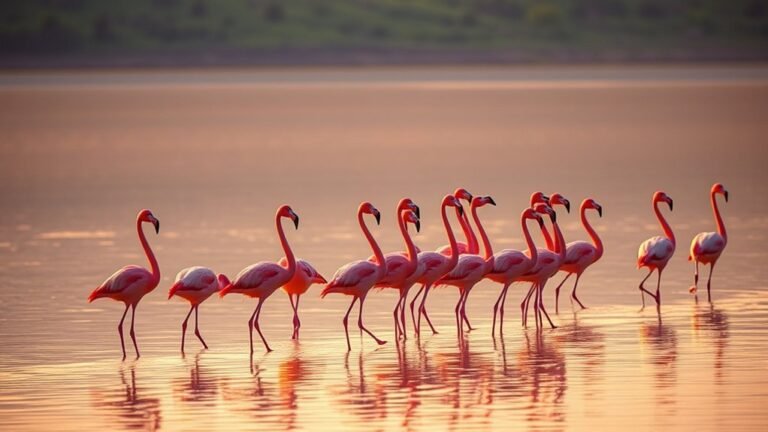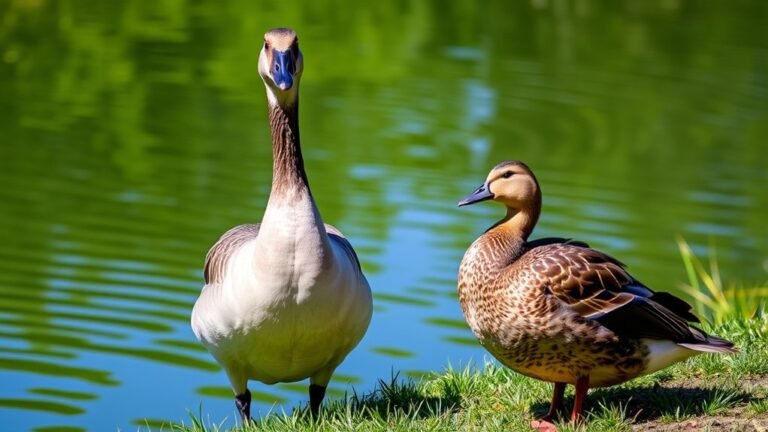Are Owls Dangerous? Understanding Their Behavior and Diets
Owls are interesting birds that people often wonder about. Some worry if they are dangerous. Owls mostly like to be alone and avoid people. They are not aggressive and don't usually threaten humans.
Owls have important jobs in nature. They help keep the balance by hunting smaller animals. Their diet includes mice, rats, and insects. This means they help control these animal populations, which is good for the environment.
Even though they look a bit scary with their big eyes and silent flight, owls do not pose a threat to people. If you look closer, you might see how fascinating and helpful these birds are. Instead of being afraid, you can admire them for their amazing skills in the wild.
A Quick Overview
Owls are not a danger to humans. They usually stay away from people and prefer to hide. They are quiet and hard to see.
Owls mainly eat small animals like mice and insects. This means they don't pose a threat to bigger animals, including us. When they hunt, they do it quietly and carefully. They rely on their sharp senses rather than being aggressive.
Owls can see very well at night. This helps them catch their food without getting into trouble. The real danger for owls comes from losing their homes and disturbances caused by humans. That's why it's important to protect their habitats and help them stay safe.
So, while owls are fascinating creatures, they're not dangerous to us!
The Fascinating World of Owls

Owls are amazing animals that make us feel curious and excited. They're symbols of wisdom, mystery, and intuition in many cultures. In stories about owls, they often help people understand things that are hard to see or know. Many ancient cultures, like the Greeks and Native Americans, saw owls as protectors or messengers from the divine.
One cool thing about owls is their ability to see in the dark. This special skill helps them represent insights that aren't obvious to everyone.
Learning about owl symbolism and the stories around them shows us how important these special birds are in our thoughts and stories. Owls capture our imagination and help us think about deeper meanings in life.
Common Species of Owls
Owls are fascinating birds that come in many types, each with its own special traits. One of the most well-known is the great horned owl. You can spot it by its pointy ear tufts and bright yellow eyes.
This owl can live almost anywhere in North America, from forests to deserts and even cities. Its diet is quite varied; it eats everything from small mice to bigger animals.
Another common type is the barn owl. This owl has a unique heart-shaped face and flies very quietly, which helps it hunt. It usually likes open fields where it can hear its prey really well.
Barn owls are excellent at finding food just by sound.
These different owls play important roles in nature. Watching them can help you feel more connected to wildlife and the great outdoors. Each owl brings something special to our world, making them exciting to learn about!
Nocturnal Hunters: Adaptations for Nighttime Predation

Owls are amazing nighttime hunters! They've special skills that help them catch their food in the dark. Let's look at how owls do this.
First, owls can see very well at night. Their eyes are built for low light, so they can spot even the smallest movements. This helps them find their prey easily.
Second, owls fly silently. Their feathers are specially made to cut through the air quietly. This means they can sneak up on animals without making a sound.
Here are some cool features that help owls hunt:
- Facial disc: This round shape on their face helps them hear better by collecting sounds.
- Asymmetrical ears: Owls have ears at different heights. This helps them know exactly where a sound is coming from.
- Special feathers: These feathers make little noise and help them fly smoothly.
- Sharp vision: Owls can see movements in the dark, so they don't miss any chances.
All these traits make owls expert hunters when night falls. They do really well in the dark, showing how amazing they are!
Diet and Hunting Techniques of Owls
Owls eat many different foods depending on the type of owl, but they mostly hunt small animals. Their meals can include little mammals, birds, and insects.
Owls are interesting hunters. They've very good hearing and can see well in the dark. This helps them find food when it's night.
When an owl is hunting, it might sit quietly on a branch, looking for snacks on the ground. Sometimes, they fly low to sneak up on their food.
Some owls even have a cool trick called "hover hunting." This means they stay in one spot in the air while they search for movement below. Learning about how they hunt shows us why owls are great night predators in nature.
Are Owls a Threat to Humans?

Are owls a threat to humans? Many people worry about owls because they look a bit spooky and are active at night. However, the truth is that owls usually don't pose a threat to us.
Here are some important facts to know:
- Owls prefer to fly away instead of attacking.
- They hunt small animals like mice, not people.
- Most reported owl attacks happen when owls feel scared or threatened.
- Learning about owls can help you feel less afraid of them.
By understanding owls, you can enjoy and appreciate these amazing birds. Knowing the facts lets you connect with nature safely and confidently.
Interactions Between Owls and Domestic Pets
Interactions between owls and pets can worry pet owners. Owls are usually not aggressive, but it's important to know how they act to keep pets safe.
Small animals like cats and dogs can catch an owl's eye, especially if they're outside alone. This is more likely to happen at dusk or dawn when owls are active.
To keep your pets safe, create secure spots in your yard, like covered areas where they can play. It's also wise to keep an eye on them during the night.
Misconceptions About Owl Behavior
Many people love owls. However, there are some common myths about them that lead to misunderstandings. People often think owls are spooky or scary. Some even believe these birds are super smart because of their connection to wisdom, but that can be misleading.
Here are some myths about owls:
- Nocturnal Predators: Owls hunt at night, but they aren't mean or aggressive.
- Symbols of Death: Some people think owls bring bad luck, but that's not true.
- Solitary Creatures: Many owls are social, especially when they're breeding.
- Intimidating Eyes: Their big eyes help them see in the dark, not to scare others.
Owls are fascinating animals, and knowing the truth about them makes them even more interesting!
The Role of Owls in Ecosystems
Owls are important for keeping their ecosystems balanced. They're good at controlling the numbers of small animals and insects. This helps prevent too many of them from taking over and causing problems in their homes.
By being predators, owls make sure that their prey doesn't crowd out other species, which helps plants and keeps nature diverse.
When you see owls, you see a part of nature working together. Each species has its role, and together they create a stable environment.
Owls thrive in places with different habitats and lots of food. When we help owls, we help keep nature healthy.
Owls are a sign of a strong ecosystem. They remind us how everything in nature connects.
Conservation Status and Habitat Protection
To help protect owl populations, we need to know how many owls there are and where they live. Many owls are in trouble, so it's important to save their homes and take special actions to keep them safe.
Here are some of the main dangers that owls face:
- Deforestation: Cutting down trees takes away places for owls to nest and hunt.
- Pesticides: Chemicals used for bugs can hurt owls and make it hard for them to find food.
- Urbanization: Growing cities take over natural areas, which means fewer owls in those spots.
- Climate Change: Changes in weather can affect what owls eat and when they breed.
We need to work together to make sure owls have safe spaces to live and thrive.
Simple actions can make a big difference!
How to Coexist Safely With Owls
To live happily with owls, you can help both them and yourself enjoy nature. First, keep the noise down when you're near their homes, and try not to bother their nests. Watching owls can be amazing! Use binoculars to see them without getting too close.
Learn about what owls do and how they sound. This will help you connect with these birds. If you have pets that go outside, watch them, especially at night. This can prevent problems with the owls.
You can also plant local plants in your yard. This makes a nice place for owls and their food.
Frequently Asked Questions
Do Owls Form Monogamous Pair Bonds for Life?
Yes, owls often form pairs that stay together for a long time, sometimes for life. These partnerships help them work together to build nests and raise their young. By sticking together, owls show they care for each other and create a safe space for their families. This bond helps them thrive in their environment.
How Do Owls Communicate With Each Other?
Owls communicate mostly by making sounds like hoots and screeches. They use these sounds to show where their territory is and to find mates. Owls also share messages through their body language. For example, they may change their posture or move their heads to express themselves. These ways of communicating help them connect with each other and get along in their surroundings. It's a fascinating way for them to express their thoughts and feelings!
What Is the Average Lifespan of an Owl?
Owls usually live between 5 and 15 years, depending on their type. In captivity, they can live longer, sometimes reaching 20 years or more. This shows how much their surroundings can affect how long they live. Owls are fascinating creatures, and their life spans can vary a lot based on where they are!
Can Owls See in Color?
Owls are amazing creatures that can see well in low light. This helps them find food at night. Some studies say owls can see some colors, but not like humans do. Instead of colors, they pay more attention to shapes and movement around them. So, while they might see a bit of color, their super skill is seeing in the dark!
Do Owls Have Any Natural Predators?
Yes, owls have some enemies. Bigger birds of prey, like eagles, can attack them. Some mammals, like foxes or raccoons, also pose a threat. These challenges show how owls stay smart and strong in nature. By watching them, you can see how they adapt to stay safe from these predators.

Luna is the passionate founder and author of Birds and You, a website dedicated to sharing her love for birds with fellow enthusiasts. Through her engaging articles and guides, she aims to educate and inspire others to explore the fascinating world of birds. When she’s not writing, you can find Luna observing birds in their natural habitats or sharing beautiful bird photography on Pinterest. Join her on this journey to celebrate and protect our feathered friends!







